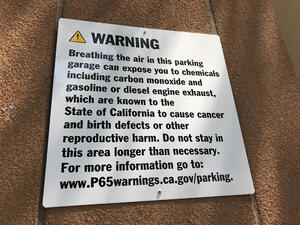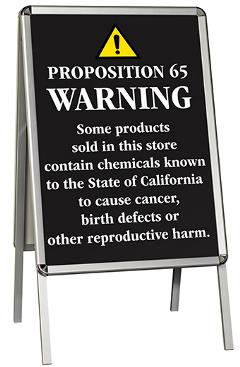 SGIA first started reporting on Proposition (Prop) 65's amendment and its impact on the printing industry nearly two years ago. As with all regulatory requirements, it's important to stay continually updated and ensure your business is fully compliant. We've modified our previous post outlining the "quick and the dirty" on Prop 65 so you are equipped with the latest on everything you need to know about its requirements.
SGIA first started reporting on Proposition (Prop) 65's amendment and its impact on the printing industry nearly two years ago. As with all regulatory requirements, it's important to stay continually updated and ensure your business is fully compliant. We've modified our previous post outlining the "quick and the dirty" on Prop 65 so you are equipped with the latest on everything you need to know about its requirements.
1. Prop 65's formal name is the Safe Drinking Water and Toxic Enforcement Act, and it first was enacted in 1986. It is intended to help workers and the general public in California make informed decisions about protecting themselves from chemicals known to cause cancer, birth defects, or other reproductive harm by providing warnings prior to potential exposure to the chemicals.
2. There are about 1,000 chemicals in the Prop 65 chemical database. California’s Office of Environmental Health Hazard Assessment (OEHHA) manages the program and database, including the addition and removal of chemicals.
3. As of August of 2018, new warning statements were required. This was the only section of the program that was amended (Article 6, Clear and Reasonable Warnings). All other provisions remained unchanged.
4. A warning is a written indicator that the business is aware or believes that it could be exposing individuals to one or more listed chemicals. Warnings can be placed on a product label or shelf label, or posted or distributed at a workplace or business.
5. Businesses with less than 10 employees and government agencies are exempt from Prop 65’s warning requirements and prohibition on discharges into drinking water sources.
6. Businesses are also exempt from the warning requirement and discharge prohibition if the exposures they cause are so low as to create no significant risk of cancer or are significantly below levels observed to cause birth defects or other reproductive harm.
 7. Businesses operating in California must include any Prop 65 chemicals used in the workplace in their "Right to Know" training required by the Occupational Safety and Health Administration’s (OSHA) Hazard Communication Standard. If businesses do this, no additional warning is required. However, their training should cover OSHA-exempt materials such as consumer products and pesticides.
7. Businesses operating in California must include any Prop 65 chemicals used in the workplace in their "Right to Know" training required by the Occupational Safety and Health Administration’s (OSHA) Hazard Communication Standard. If businesses do this, no additional warning is required. However, their training should cover OSHA-exempt materials such as consumer products and pesticides.
8. OEHHA has developed safe harbor levels to help businesses determine if a warning is necessary. A business has “safe harbor” from Prop 65 warning requirements or discharge prohibitions if exposure to a chemical occurs at or below these levels.
9. If no safe harbor level is listed for a chemical, businesses exposing individuals to that chemical are required to provide a Prop 65 warning, unless the business can show that the anticipated exposure level will not pose a significant risk of cancer or reproductive harm. Unfortunately, there is not a specific approach mandated on how the exposure assessment is to be conducted. The exposure assessment needs to be based on the routes of exposure, product data (i.e., concentrations or levels of the listed chemical in products), exposure data, and product use data (e.g., frequency of use, duration of use, and amount of the product used per application).
10. Testing the product is not required.
11. Businesses are not required to provide certification that the product meets Prop 65 requirements! However, print customers may request assurances of compliance.
Questions? Contact the Government Affairs department at govtaffairs@sgia.org.